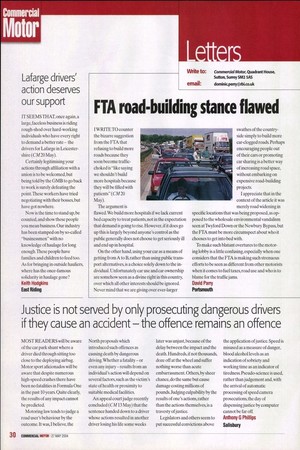Justice is not served by only prosecuting dangerous drivers if they cause an accident — the offence remains an offence
Page 30

If you've noticed an error in this article please click here to report it so we can fix it.
MOST READERS will be aware of the car park shunt where a driver died through sitting too close to the deploying airbag. Motor sport aficionados will be aware that despite numerous high-speed crashes there have been no fatalities in Formula One in the past 10 years. Quite clearly, the results of any impact cannot be predicted. Motoring law tends to judge a road user's behaviour by the outcome. It was, I believe, the
North proposals which introduced such offences as causing death by dangerous driving. Whether a fatality — or even any injury — results from an individual's action will depend on several factors, such as the victim's state of health or proximity to suitable medical facilities. An appeal court judge recently concluded (CM13 May) that the sentence handed down to a driver whose actions resulted in another driver losing his life some weeks
later was unjust, because of the delay between the impact and the death. Hundreds, if not thousands, doze off at the wheel and suffer nothing worse than acute embarrassment. Others, by sheer chance, do the same but cause damage costing millions of pounds. Judging culpability by the results of one's actions, rather than the actions themselves, is a travesty of justice. Legislators and others seem to put successful convictions above
the application of justice. Speed is misused as a measure of danger, blood alcohol levels as an indication of sobriety and working time as an indicator of tiredness. Pseudo-science is used, rather than judgement and, with the arrival of automatic processing of speed camera prosecutions, the day of dispensing justice by computer cannot be far off. Anthony G Phillips Salisbury






























































































































































































